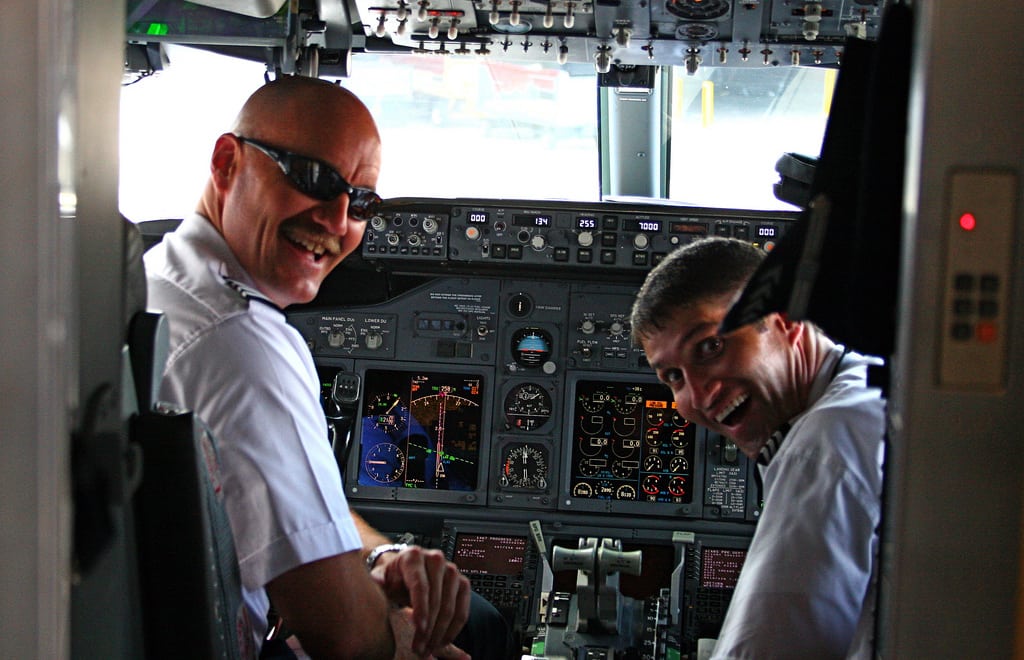The airline industry is blocking the FAA’s attempt to implement new pilot laws

Skift Take
Faced with substantial industry opposition, federal regulators are struggling to implement a sweeping aviation safety law enacted after the last fatal U.S. airline crash nearly four years ago, according to a report by a government watchdog.
The Federal Aviation Administration is experiencing lengthy delays in putting in place rules required by the law to increase the amount of experience necessary to be an airline pilot, provide more realistic pilot training and create a program where experienced captains mentor less experienced first officers, according to the report by the Department of Transportation’s Inspector General. The report was obtained by The Associated Press.
The FAA is also running into problems creating a new, centralized electronic database that airlines can check prior to hiring pilots, the report said. The database is supposed to include pilots’ performance on past tests of flying skills.
In each case, the agency has run into significant opposition from the airline industry, the report said.
“To effectively implement these initiatives in a timely manner, (the) FAA must balance industry concerns with a sustained commitment to oversight,” the report said.
Congress passed the law a year and a half after the Feb. 12, 2009, crash of a regional airliner near Buffalo, N.Y., that killed all 49 people aboard and a man on the ground. A National Transportation Safety Board investigation of the accident highlighted weaknesses in pilot training, tiring work schedules, lengthy commutes and relatively low experience levels for pilots at some regional carriers.
The accident was due to an incorrect response by the flight’s captain to two key safety systems, causing an aerodynamic stall that sent the plane plummeting into a house below, the NTSB investigation concluded.
“The law is only as strong as the regulations that come from it so this (implementation) process is the true measuring stick of how this law will ultimately be viewed,” said Kevin Kuwik, spokesman for a group of family members of victims killed in the crash. The family members lobbied relentlessly for passage of the safety law. Kuwik lost his girlfriend, 30-year-old Lorin Maurer, in the accident.
Driven by the accident and the new safety law, the FAA substantially revised its rules governing pilot work schedules to better ensure pilots are rested when they fly. It was the first modification of the rules since 1985 and “a significant achievement” for the FAA, the report said.
Kuwik said he gives the FAA “a lot of credit” for revising the work schedule rules and for staying in touch with victims’ family members. However, he said it’s critical that the agency meet deadlines later this year for issuing new regulations on pilot training and qualifications.
“If the foot-dragging continues and missing deadlines…, the potentially significant effects of the safety bill will be lost,” Kuwik said.
Responding to the report, the FAA said in a statement that more than 90 percent of air carriers now use voluntary programs in which pilots and others report safety problems with the understanding that there will be no reprisals for their conduct or computer-assisted programs that identify and report safety trends. “This has led to significant training, operational and maintenance program improvements,” the statement said.
The agency also noted that it has “delivered seven reports to Congress, initiated five rulemaking projects and continued rulemaking efforts for another four final rules as a result of the” new safety law.
The inspector general’s report, however, details how FAA has missed deadlines and run into complications trying to issue regulations necessary to implement key portions of the law.
For example, the FAA is behind schedule on rules to substantially increase the experience required to become an airline pilot from the current 250 flight hours to 1,500 flight hours. The agency currently estimates it will issue the rules in August, a year after the deadline set in the law. Airlines, worried they won’t be able to find enough qualified new pilots, oppose the increase, arguing that a pilot’s quality and type of flying should be weighed more heavily than the number of flight hours.
The FAA has proposed a compromise that would allow military pilots with 750 hours of flight experience or pilots with 1,000 hours and a four-year aviation degree to qualify to be hired as an airline pilot, but airlines remain opposed. If the FAA doesn’t act by the August deadline, the increase to 1,500 hours will take effect without the exceptions offered in FAA’s compromise proposals.
Yet the FAA and its inspectors haven’t taken steps to ensure regional airlines, which will most affected, will be able to meet the new requirements, the report said. At two regional carriers visited by the inspector general’s office, 75 percent of the first officers didn’t have an air transport certificate — the highest level pilot’s license issued by the FAA —which will be required for all airline pilots by the August deadline.
___
Online:
The Federal Aviation Administration: http://www.faa.gov
Department of Transportation Inspector General: https://www.oig.dot.gov/
___
Follow Joan Lowy at http://www.twitter.com/AP_Joan_Lowy
![]()




